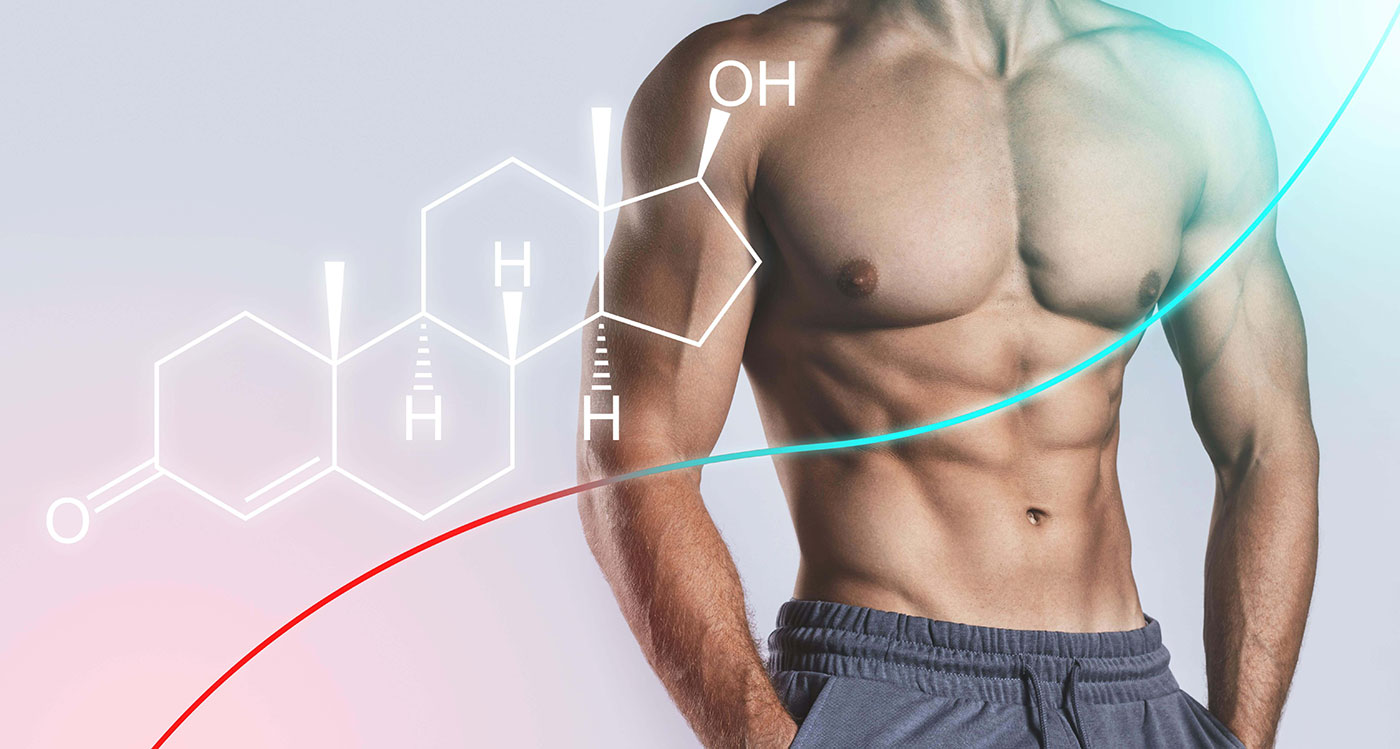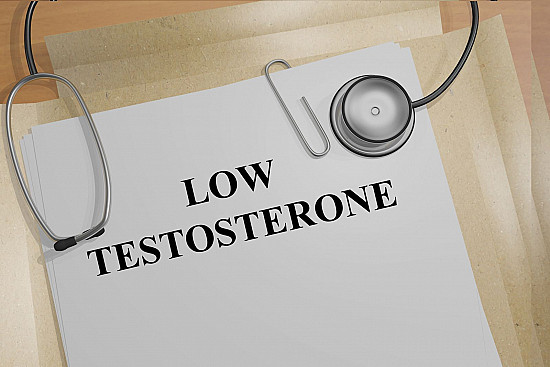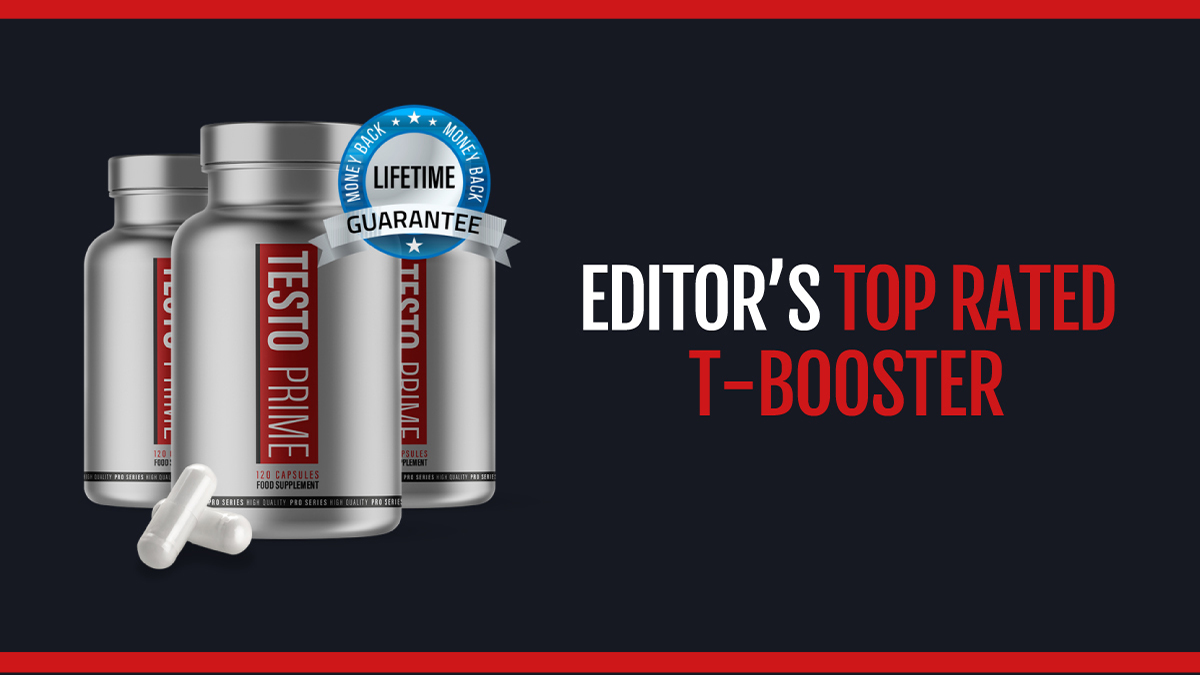Low testosterone is a hormone that is present in both men and women. It is a vital hormone that plays an important role in the body. In men, it plays an essential role in sperm production and sex drive. In women, it controls the menstrual cycle and reproduction. Besides this, it has numerous other functions like regulating weight, muscle mass, and strength.
When there’s a shortage of this hormone, it can cause numerous physical and psychological effects on the body. One such effect is muscle loss. Let’s understand how testosterone affects muscle mass and strength in both men and women in this blog.

What is Low Testosterone?
Low testosterone, or male hypogonadism, is a condition in which the testicles do not produce enough testosterone. Testosterone levels between 300 and 1,000 nanograms per deciliter of blood are considered healthy, with any level below this accompanied by symptoms indicating low testosterone. In men, low testosterone levels can result from problems with the testes, such as reduced size or function, or due to tumors or other conditions affecting the testes.
Testosterone levels naturally decline as men age and decrease by up to 1% per year after the 30s; low testosterone is classified as less than 300 nanograms per deciliter. Symptoms of low testosterone include fatigue, decreased libido, erectile dysfunction, depressed mood, acne, and hair loss. Men with low testosterone may also experience osteoporosis and difficulty concentrating and may be more prone to obesity. However, too much testosterone can also have adverse effects on health.
Effects of Low Testosterone Levels on Muscle Mass
Testosterone is an anabolic hormone that promotes muscle growth and development. Testosterone levels peak during puberty and young adulthood when muscle mass is rapidly increasing. After that, testosterone levels tend to decline with age, resulting in a gradual loss of muscle mass. Low testosterone levels have been linked to a condition called sarcopenia, which is the loss of muscle mass and strength that occurs with aging.
- Research has shown that low testosterone levels are associated with a decrease in muscle mass. A study conducted by Bhasin et al. (2001) found that men with low testosterone levels had a significant reduction in lean body mass compared to men with normal testosterone levels. Another study by Ferrando et al. (2002) found that older men with low testosterone levels had a decrease in muscle mass and strength compared to older men with higher testosterone levels.
In addition to promoting muscle growth, testosterone also plays an important role in muscle strength. Testosterone helps to increase muscle size and strength by promoting the production of muscle protein and reducing muscle breakdown. Low testosterone levels can result in a decrease in muscle strength.
- A study by Storer et al. (2003) found that men with low testosterone levels had reduced muscle strength compared to men with normal testosterone levels. Another study by Singh et al. (2006) found that older men with low testosterone levels had reduced grip strength compared to older men with higher testosterone levels.
- Resistance training is another option for increasing muscle mass and strength in men with low testosterone levels. Resistance training involves using weights or resistance bands to build muscle. Resistance training has been shown to increase testosterone levels and improve muscle mass and strength in men with low testosterone levels (Vingren et al., 2010).
There are many factors that can reduce the level of testosterone in the body, including age and disease.
- Testosterone is a hormone that is responsible for building and maintaining your muscles. When a person’s levels of testosterone are low, it can cause significant loss of muscle mass. However, function and strength do not appear to be affected by a low testosterone level.
- Testosterone binds to muscle cells to maintain strength and muscle fibers, but declines with age, leading to muscle loss. As a result, people with low levels of testosterone may experience difficulty building muscle, fatigue and decreased interest in sexual activity.
- Medical advancements have led to methods for getting testosterone levels back to optimal levels, so if you experience symptoms such as difficulty building or losing muscle mass or fatigue when your level of testosterone is low, consult with your doctor for further guidance.

Treatment Options: There are several treatment options available for men with low testosterone levels who are experiencing a decrease in muscle mass and strength. Testosterone replacement therapy (TRT) is one option. TRT involves the administration of testosterone to increase testosterone levels. TRT has been shown to increase muscle mass and strength in men with low testosterone levels (Bhasin et al., 1996).
Why Low Testosterone Causes Muscle Loss?
Low testosterone can contribute to muscle loss for several reasons:
- Decreased protein synthesis: Testosterone plays a crucial role in protein synthesis, which is the process by which your body builds muscle. Low levels of testosterone can slow down protein synthesis, making it harder for your body to build and maintain muscle mass.
- Increased protein breakdown: Low testosterone levels can also lead to an increase in protein breakdown, which means your body is breaking down muscle tissue faster than it can build it back up.
- Reduced energy levels: Testosterone is also important for energy levels, and low levels of testosterone can cause fatigue and a lack of energy, making it harder to maintain muscle mass through exercise and other physical activity.
- Increased fat accumulation: Low testosterone levels can lead to an increase in body fat, particularly around the belly. This can also contribute to muscle loss, as excess body fat can interfere with muscle building and maintenance.
- Decreased exercise capacity: Testosterone is important for physical performance and endurance, and low levels of testosterone can reduce exercise capacity, making it harder to maintain muscle mass through regular exercise.
Low testosterone can contribute to muscle loss through a combination of reduced protein synthesis, increased protein breakdown, decreased energy levels, increased fat accumulation, and decreased exercise capacity.
Frequently Asked Questions
- What are the causes of low testosterone levels in men?
Low testosterone levels in men are caused by a variety of factors, the most common of which include hypogonadism, testicular injury or infection, drug abuse, hormone disorders, and aging. Hypogonadism is a condition where the testicles do not produce enough testosterone and can cause different symptoms at different stages of life. Being overweight or obese, injury or infection of the testicles, and advancing age can all contribute to low testosterone levels. In some cases, there may be a genetic component as well as certain medications such as chemotherapy or radiation treatments that can cause a decrease in testosterone production. In females, surgical removal of the ovaries (or oophorectomy) may also result in lower testosterone levels.
- Are there any natural remedies to increase testosterone levels?
Yes, there are several natural remedies that may help increase testosterone levels, such as regular exercise, adequate sleep, stress reduction, a healthy diet rich in protein and healthy fats, and taking certain supplements like vitamin D and zinc. However, it’s important to note that these remedies may not work for everyone and it’s always best to consult with a healthcare professional before trying any new treatments.
- Does low testosterone reduce strength?
It is true that low testosterone can affect muscle strength, but it does not reduce existing muscle mass or function. Low levels of testosterone can cause decreased energy levels and reduced ability to build muscle and strength. It can also lead to a decrease in libido, fatigue and weakness, loss of lean body mass, reduction in fertility, and an overall decrease in quality of life.
Let’s Sum Up
Low testosterone levels can cause a decrease in muscle mass and strength. This can lead to a variety of health problems, including an increased risk of osteoporosis, obesity, and diabetes. Low testosterone is also responsible for changing the metabolism of fats and proteins in the body. As a result, the body becomes less able to produce lean muscle mass while increasing fat storage. To boost your testosterone production and prevent muscle loss, you should first understand how your body produces this hormone.




